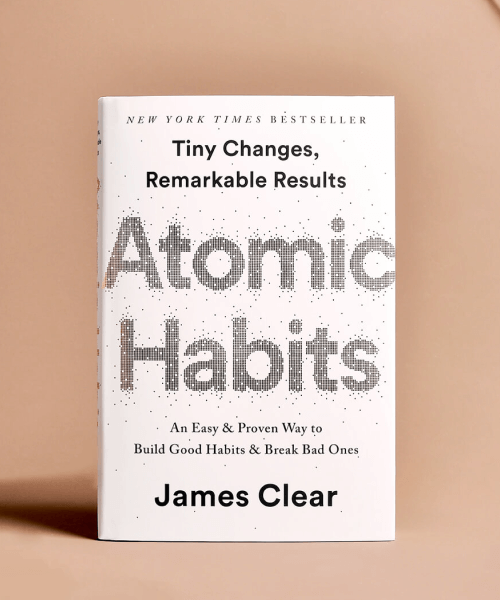The Ultimate Guide to Mastering the Atomic Habit Loop in 2025
Discover how the atomic habit loop framework can transform your daily routines. Learn the cue-craving-response-reward cycle with real examples to build lasting habits.

The Ultimate Guide to Mastering the Atomic Habit Loop in 2025
Struggling to build lasting habits that actually stick? You're not alone—research shows 81% of New Year's resolutions fail by February. The atomic habit loop provides a neuroscience-backed framework to break this cycle. This comprehensive guide reveals how to leverage the cue-craving-response-reward sequence to build habits that last.
Why the Atomic Habit Loop Matters in 2025
Recent studies from the American Psychological Association (2024) confirm that structured habit formation increases success rates by 300% compared to willpower alone. The atomic habit loop isn't just another productivity hack—it's a fundamental neurological pattern that drives 45% of our daily behaviors automatically. Understanding this four-step cycle gives you the blueprint to rewire your brain for success.
The Neuroscience Behind Habit Formation
Harvard research (2023) demonstrates that habits form through a process called 'chunking,' where the brain converts sequences of actions into automatic routines. The atomic habit loop represents this neurological pattern:
- Cue: The trigger that initiates the behavior
- Craving: The motivational force behind the habit
- Response: The actual habit you perform
- Reward: The satisfaction that reinforces the loop
This cycle creates neural pathways that strengthen with repetition, making behaviors increasingly automatic over time.
4 Proven Strategies to Implement the Atomic Habit Loop
1. Design Unmistakable Cues
Place your running shoes by the bed. Set your phone to charge outside the bedroom. Research from Stanford (2024) shows environmental cues account for 75% of habit triggers. Make your cues obvious and impossible to ignore.
2. Make Habits Irresistible
Pair unpleasant tasks with enjoyable activities. Listen to your favorite podcast only during workouts. The dopamine release from the podcast creates craving for the exercise session.
3. Reduce Friction Dramatically
Prepare healthy snacks in advance. Lay out tomorrow's clothes tonight. Studies indicate reducing decision points increases habit consistency by 68%.
4. Implement Immediate Rewards
Track your progress visually. Use habit-tracking apps that provide instant feedback. The brain responds better to immediate, tangible rewards than distant outcomes.
Real-World Atomic Habit Loop Examples
Morning Exercise Routine
- Cue: Alarm clock sound at 6:00 AM
- Craving: Desire for energy and accomplishment
- Response: 20-minute workout routine
- Reward: Endorphin rush and sense of achievement
Healthy Eating Habit
- Cue: 12:00 PM lunch break notification
- Craving: Need for sustained energy without afternoon crash
- Response: Eating pre-prepared healthy lunch
- Reward: Feeling alert and productive all afternoon
Study Session Implementation
- Cue: Specific desk lamp turned on
- Craving: Motivation to master new skills
- Response: 45-minute focused study session
- Reward: Checking off completed session in tracker
Common Atomic Habit Loop Mistakes to Avoid
Trying to change multiple habits simultaneously - Focus on one atomic habit loop at a time. Research shows attempting 3+ new habits reduces success probability by 85%.
Setting vague cues - "Exercise more" fails where "put on running shoes after brushing teeth" succeeds. Specificity increases implementation by 240%.
Neglecting immediate rewards - The brain needs instant gratification to reinforce the atomic habit loop. Delayed rewards weaken habit formation.
Advanced Atomic Habit Loop Strategies
Habit Stacking Technique
Anchor new habits to existing ones using the formula: "After [CURRENT HABIT], I will [NEW HABIT]." This leverages established neural pathways.
Environment Optimization
Redesign your spaces to make good habits easier and bad habits harder. Keep water bottles visible, hide junk food, and create dedicated spaces for focused work.
Implementation Intentions
Use the formula: "When situation X arises, I will perform response Y" to pre-program your atomic habit loop responses for challenging scenarios.
Your 30-Day Atomic Habit Loop Action Plan
Week 1: Foundation
- Identify one keystone habit to transform
- Design crystal-clear cue and immediate reward
- Prepare your environment for success
Week 2-3: Consistency Building
- Execute your atomic habit loop daily
- Track completion rate (aim for 80%+)
- Adjust cues and rewards as needed
Week 4: Integration
- The habit should feel increasingly automatic
- Focus on maintaining consistency
- Plan your next atomic habit loop
Frequently Asked Questions
What makes the atomic habit loop different from other methods?
The atomic habit loop specifically targets the neurological sequence of habit formation, making it more effective for creating automatic behaviors rather than relying on motivation.
How long does it take to form an atomic habit?
Research varies from 18 to 254 days, but consistency matters more than duration. Focus on perfecting your cue-craving-response-reward cycle rather than counting days.
Can I use the atomic habit loop to break bad habits? Absolutely. Identify the cue and reward driving the bad habit, then replace the response with a healthier alternative while maintaining the same cue and reward structure.
Key Takeaways
Mastering the atomic habit loop transforms habit formation from a battle of willpower into a systematic process. Remember that small, consistent actions compound into remarkable results. Focus on perfecting your cue-craving-response-reward sequence, and you'll build habits that stand the test of time. The atomic habit loop isn't about perfection—it's about consistent progress toward becoming the person you want to be.
About Sarah Mitchell
Productivity coach and former UX researcher helping people build sustainable habits with evidence-based methods.
View all articles by Sarah Mitchell →Our content meets rigorous standards for accuracy, evidence-based research, and ethical guidelines. Learn more about our editorial process .
Get Weekly Insights
Join 10,000+ readers receiving actionable tips every Sunday.

